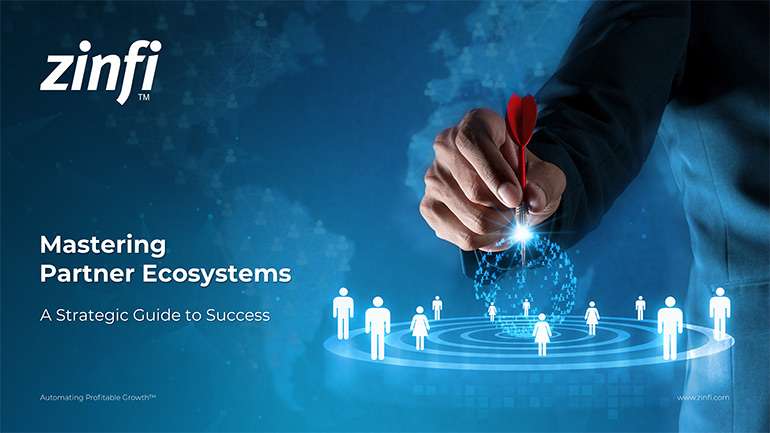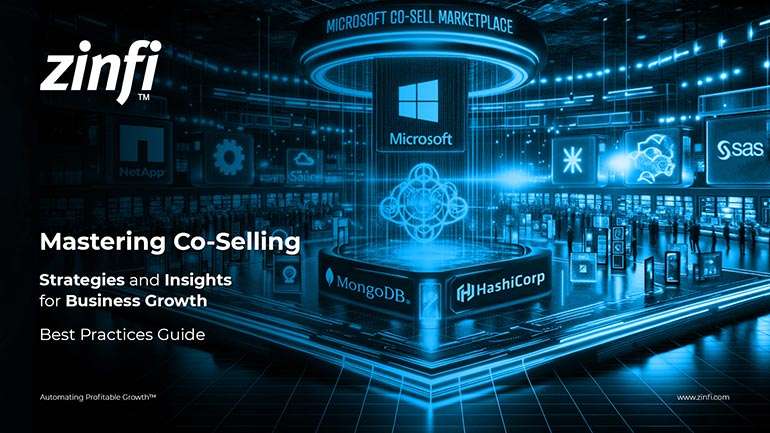Best Practices Articles

Incentivizing Partners Using Channel Management Software
Managing partner performance by providing the right kind of incentives is critical to the success of any channel sales initiative. This is where the right kind of channel management software can make a big difference. While there are numerous point tools available that can be used to provide partner rewards, rebates, market development funds (MDF) and co-op funds, the reality is that none of these point solutions is nearly as effective as a Unified Partner Management software platform. In this article we will explore why.
Before we deep-dive into the core capabilities needed for partner incentives management in Unified Partner Management software, let’s first explore which incentives are effective and which have the ability to drive partner performance. To understand what works and what doesn’t, it is critical to look at the psychology behind incentives.
There is plenty of evidence that human beings typically respond most powerfully to drivers related to fear and greed. In the movie Wall Street, the fictional character Gordon Gekko provides an instructive example of how human behavior can be driven by the fear of not having more or of losing what one has. The same psychology is operative for channel partners in the real world. Channel programs that are designed without an understanding of this fundamental human trait tend to fail. It doesn’t matter what channel management software you are using—if you don’t understand what motivates people and structure your incentives program accordingly, you are going to automate an initiative that simply doesn’t work at a human level.
Now, let’s assume you are familiar with basic incentives programs, like sales rewards, company rebates, market development funds and co-op funds. It is critical to know which types of incentives will drive the right behavior at a partner company level, and it is even more important to understand how incentives can drive behavior at a functional level—i.e., at the level of marketing, sales, technical and support activities. Each of these functional groups responds to incentives differently. For example, sales may respond to the offer of a $500 gift card, whereas technical personnel may place more value on a waiver of training fees that the partner company won’t pay for and that they can’t personally afford. The right kind of channel management software will give you the flexibility to customize programs to match the needs of individuals fulfilling specific functions.
Once you have designed an incentives program that is appropriate to a specific job function, the next step is to make sure each program also makes sense for the medallion status (gold, silver, bronze) of specific partner groups and the partner’s market specialization (e.g., healthcare, manufacturing, technology, etc.). Again, the right channel management software can be a big help in dealing with this kind of complexity.
Once you have a program designed and rolled out to specific partner types, groups and functions, the next step is to make sure your partners can easily and quickly apply for various types of incentives programs, submit claims and get paid. This is where it is critical to deploy channel management software that can track the incentives process end to end, and provide dynamic resolution and reports. Very few tools can do this today.
Most importantly, if you are trying to track partner performance data (e.g., how many partner employees have been trained, certified and engaged, how many deals they have closed, what products they are selling, etc.), Unified Partner Management software is necessary so you have a single, comprehensive view of what is working and what is not and can then optimize incentives based on that complete model.
Incentives are a critical way to drive partner performance. As I have try to demonstrate here, selecting the right kinds of programs and deploying those programs to the right kinds of partner groups is even more critical. For a program to scale and for you to optimize the various dimensions of it, you will need state-of-the-art channel management software that can reveal the cause-and-effect dynamics behind performance and give you the levers you need to quickly make adjustments and optimize results.
Best Practices Guidebook
 How to Start and Scale Partner Ecosystems Best Practices
How to Start and Scale Partner Ecosystems Best PracticesDownload Guide
 The Evolution of PartnerOps: Past, Present & Future Best Practices
The Evolution of PartnerOps: Past, Present & Future Best PracticesDownload Guide
 Mastering Channel Sales: Strategies, Best Practices, and Growth Tactics for 2025
Mastering Channel Sales: Strategies, Best Practices, and Growth Tactics for 2025Download Guide
 Winning with Partner Advisory Councils: Best Practices for Partner Engagement & Growth
Winning with Partner Advisory Councils: Best Practices for Partner Engagement & GrowthDownload Guide
 The Future of Partner Ecosystems Best Practices
The Future of Partner Ecosystems Best PracticesDownload Guide
 The AI Revolution: How Technology and Talent are Shaping the Future
The AI Revolution: How Technology and Talent are Shaping the FutureDownload Guide
 Top 105 Partner Management Metrics that Matter Best Practices
Top 105 Partner Management Metrics that Matter Best PracticesDownload Guide
 Mastering PRM Integration Best Practices
Mastering PRM Integration Best PracticesDownload Guide
 Building a Sales Partner Portal with Salesforce Best Practices
Building a Sales Partner Portal with Salesforce Best PracticesDownload Guide
 Building and Managing Partner Ecosystems Best Practices
Building and Managing Partner Ecosystems Best PracticesDownload Guide
 Mastering Co-Marketing and Co-Selling Best Practices
Mastering Co-Marketing and Co-Selling Best PracticesDownload Guide
 Transforming Partner Ecosystems Best Practices
Transforming Partner Ecosystems Best PracticesDownload Guide
 Mastering Partner Ecosystems Best Practices
Mastering Partner Ecosystems Best PracticesDownload Guide
 Mastering Partner Onboarding Best Practices
Mastering Partner Onboarding Best PracticesDownload Guide
 Partner Ecosystem Management Best Practices
Partner Ecosystem Management Best PracticesDownload Guide
 B2B Marketing in the Age of Intelligence Best Practices
B2B Marketing in the Age of Intelligence Best PracticesDownload Guide
 Multi-Partner Co-Selling Best Practices
Multi-Partner Co-Selling Best PracticesDownload Guide
 A Guide to Enhance Channel Sales Efficiency
A Guide to Enhance Channel Sales EfficiencyDownload Guide







